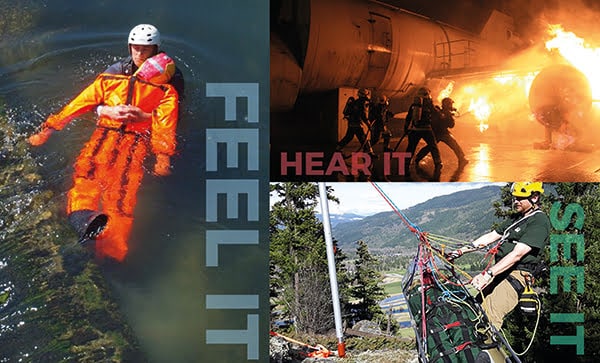The mantra, “train like you fight, fight like you train” is a common military idea.
It’s common sense really. Learning in a context you are likely to experience in ‘real-life’ means you are much more likely to readily produce those skills under pressure. You need your training to be as close to the real thing as is possible if you want to make sure your team perform at their best.
At Ruth Lee we have stressed the importance of creating realistic training scenarios for many years. The idea of “Training like you fight” is a great philosophy to adopt when thinking about training.
After all, if you only ever learn to perform airway management skills on a dismembered torso in a warm classroom, how will you cope when you are expected to perform these life-saving skills on a patient in a more difficult scenario, such as in a road traffic accident, or where the patient is trapped in a confined space for example?
Whether you work in the Armed Forces, as part of the fire service, or as a volunteer in a rescue team, training in a variety of realistic scenarios will make sure that when there is a true emergency, adrenalin kicks in, but does not overshadow the skills you are expected to perform. You are much more likely to repeat skills learned in similar scenarios.
Repetition is also an important consideration here. It’s proven that repetition of a skill when learning will transform short term memory into long term memory – effectively becoming ‘second nature’. Scenario based training with reasonable frequency
Realistic manikins for real-life scenarios
So how can you make sure that your training is as realistic as possible? One way is to set up scenarios in difficult environments and making sure that your equipment is well matched to the training. For example, if you want to simulate a serious road traffic accident where a casualty has been impaled…don’t just shove a metal bar under a dummies arm! Our Multi-Trauma manikin has a cavity built into the torso to allow you to create a true impalement and therefore lets your team construct effective plans for extricating someone from this situation.
Likewise, with obesity a growing problem across the world – how do you think your team would react to evacuating a morbidly obese casualty down a flight of stairs in a fire? During an emergency is NOT the time to problem solve such conundrums! It is vital that as a team, you complete training which teaches you to tackle difficult scenarios such as this as quickly and safely as possible and with bariatric training manikins weighing in at 90, 180 and 260 kgs, your team can learn to handle realistic weight and bulk.
Training manikins are also the obvious solution when training in particularly difficult or dangerous environments. You wouldn’t endanger the life of a ‘volunteer’ by pitching them into rough waters and saying, “don’t worry, we’ll just discuss the brief and then we will be right along to rescue you!” – neither would we ask someone to go and wedge themselves down a collapsed mine shaft, potentially with limited breathable air and say “we’ll be right there”! Training manikins are the obvious choice for any scenario where there is an element of risk involved.
Stimulate the senses
We often hear how smell is a very strong trigger for memory. It takes sense then that when creating a training scenario, you try to stimulate as many senses as possible. Fire simulation is a very effective method of stimulating the senses during training, improving the retention of skills acquired. With smoke machines, sound simulators, silk flames and an array of ‘simulators’, we can help you create a very realistic training scenario which has to be seen to be believed.
If you are based in the UK, our Sales Team can visit your site to give a free, no obligation demonstration of our fire simulation products – letting you see for yourself the fantastic effects which can be achieved for a relatively small investment.
